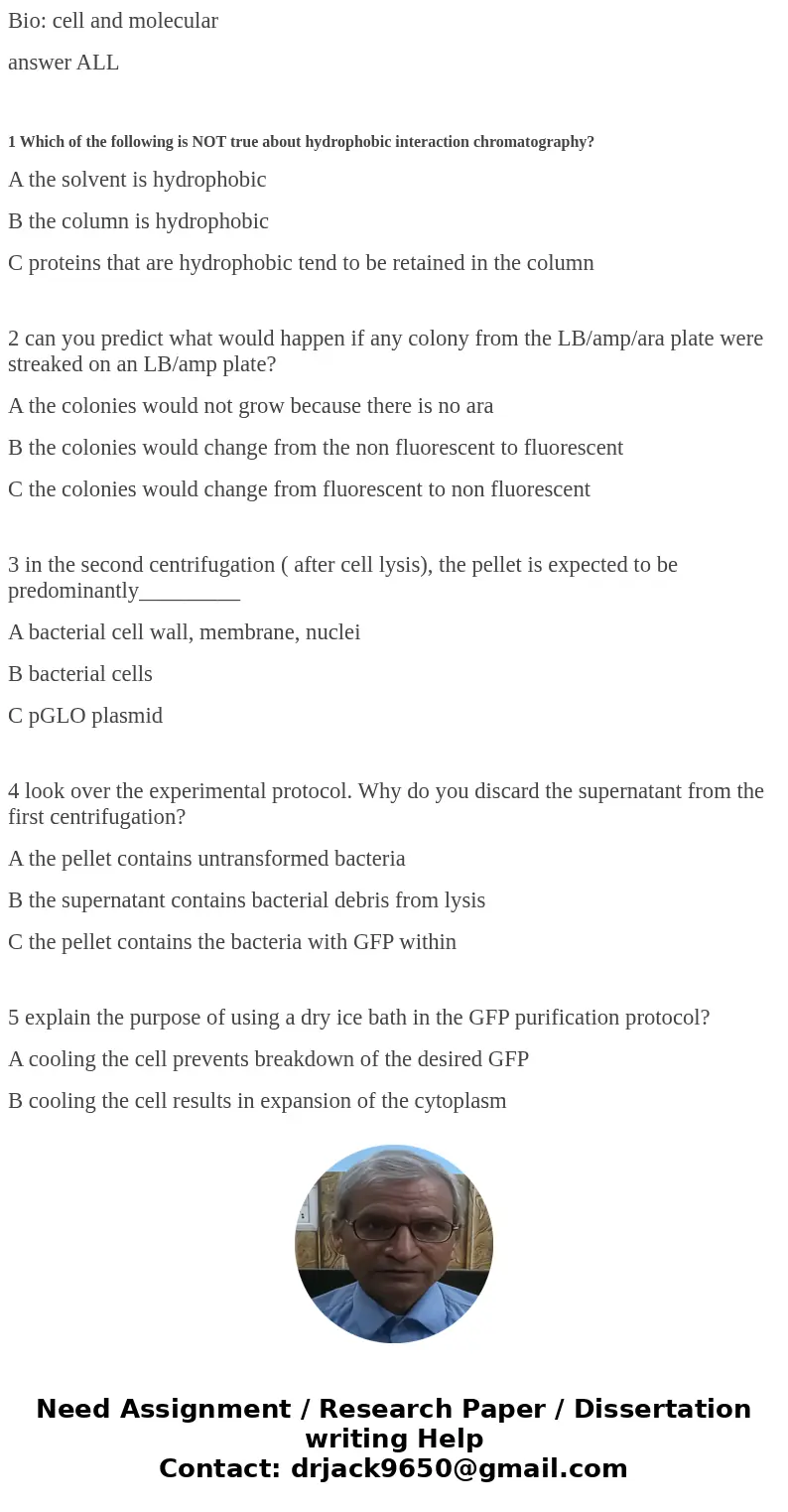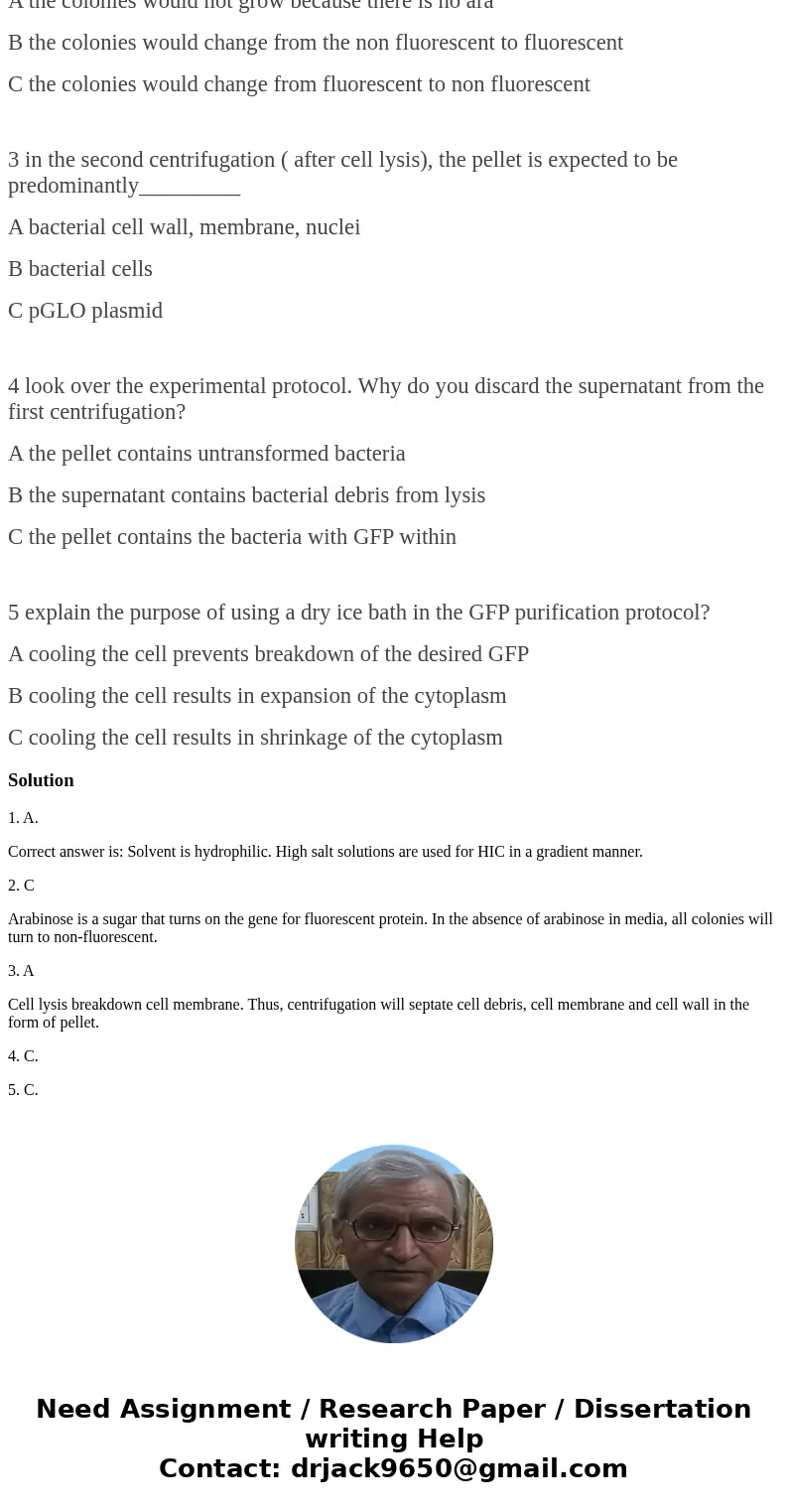Bio cell and molecular answer ALL 1 Which of the following i
Bio: cell and molecular
answer ALL
1 Which of the following is NOT true about hydrophobic interaction chromatography?
A the solvent is hydrophobic
B the column is hydrophobic
C proteins that are hydrophobic tend to be retained in the column
2 can you predict what would happen if any colony from the LB/amp/ara plate were streaked on an LB/amp plate?
A the colonies would not grow because there is no ara
B the colonies would change from the non fluorescent to fluorescent
C the colonies would change from fluorescent to non fluorescent
3 in the second centrifugation ( after cell lysis), the pellet is expected to be predominantly_________
A bacterial cell wall, membrane, nuclei
B bacterial cells
C pGLO plasmid
4 look over the experimental protocol. Why do you discard the supernatant from the first centrifugation?
A the pellet contains untransformed bacteria
B the supernatant contains bacterial debris from lysis
C the pellet contains the bacteria with GFP within
5 explain the purpose of using a dry ice bath in the GFP purification protocol?
A cooling the cell prevents breakdown of the desired GFP
B cooling the cell results in expansion of the cytoplasm
C cooling the cell results in shrinkage of the cytoplasm
Solution
1. A.
Correct answer is: Solvent is hydrophilic. High salt solutions are used for HIC in a gradient manner.
2. C
Arabinose is a sugar that turns on the gene for fluorescent protein. In the absence of arabinose in media, all colonies will turn to non-fluorescent.
3. A
Cell lysis breakdown cell membrane. Thus, centrifugation will septate cell debris, cell membrane and cell wall in the form of pellet.
4. C.
5. C.


 Homework Sourse
Homework Sourse